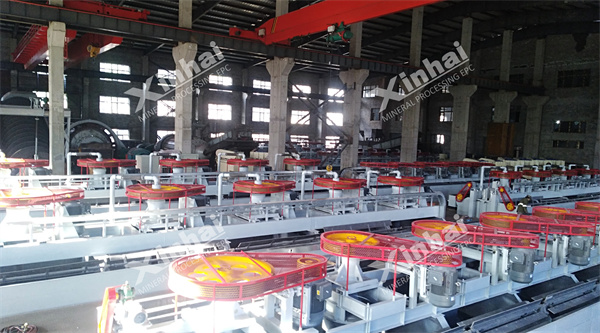Phosphorus resources, as a non renewable and precious mineral resource, occupy a pivotal position in the global industrial and agricultural production fields. Whether as a key component of fertilizers, chemical raw materials, or feed, phosphate resources are closely linked to the stable operation of numerous industries. However, due to the influence of various complex factors on the formation of phosphate ore in nature, it is often accompanied by a large amount of impurities in vein minerals, which makes the newly mined raw phosphate unable to be directly used as raw materials for industrial production. Therefore, after being extracted, phosphate must go through a series of beneficiation processes to remove impurities and enhance the enrichment of phosphorus, in order to meet the standard requirements of industrial production.

On a global scale, phosphate deposits can be divided into five main types, each with distinct differences in formation conditions and mineral characteristics, which undoubtedly pose significant challenges to the design of mineral processing techniques. Here are the five main types of phosphate deposits:
Weathered phosphate sediments: These sediments are formed through weathering and typically appear in shallow surface areas.
Metamorphic phosphate deposits: Formed by geological metamorphism, their ore quality is generally relatively high.
Marine sedimentary deposits: Formed by sedimentation in marine environments, they are one of the most common types of phosphate deposits in the world.
Thermogenic phosphate deposits: formed during volcanic activity or magma cooling processes, with complex mineral types.
Biological phosphate deposits: formed by biological processes and generally distributed in special geological environments.
The current economically valuable apatite deposits mainly come from metamorphic phosphate deposits and thermally formed phosphate deposits.
There are various types of phosphate ore, and their associated vein minerals and impurities are also different. Therefore, when choosing a beneficiation process, it is necessary to fully consider the characteristics of the ore type. According to the properties of associated minerals, phosphate ore can be divided into the following three categories:
1.Mineral processing of siliceous phosphate phosphate ore
The associated minerals of this type of phosphate ore are mainly chalcedony, quartz, or silica in the form of protein. For siliceous phosphate ore, harmful impurities can be effectively removed through re-election or flotation methods to achieve enrichment of phosphate ore. The reselection process utilizes the difference in mineral density for separation, while the flotation process utilizes the physical and chemical properties of mineral surfaces to separate apatite from gangue minerals through bubbles. The processing technology for this type of ore is relatively mature and the technical difficulty is also relatively low.
2.Mineral processing of clay phosphate ore
The associated minerals of clay phosphate mainly include clay, alumina, and hydrated iron. Due to the small and dispersed particles of clay minerals, scrubbing and washing processes are usually used to remove impurities. Scrubbing can use water flow or mechanical action to separate clay minerals from apatite particles. Due to the ease of separation of these associated minerals, the beneficiation of this type of phosphate ore is relatively simple and the beneficiation efficiency is also relatively high.
3.Mineral processing of carbonate phosphate ore
Carbonate phosphate ore is mainly composed of calcium phosphate or limestone containing phosphate, sometimes with a small amount of quartz. The beneficiation difficulty of this type of ore is relatively high, and currently there is no large-scale and mature beneficiation process that can successfully separate all carbonate phosphate ores. Due to the similar physical properties between carbonate minerals and apatite, it is difficult to effectively separate them using conventional physical beneficiation methods. Although the beneficiation of this type of ore is difficult, its reserves account for two-thirds of the global phosphate resources and are widely distributed. Therefore, with the increasing demand for raw materials in the phosphate industry, it is necessary to carry out reasonable mining and sorting of low-grade sedimentary phosphate ore containing carbonate impurities in the future. This can not only ensure the continuous supply of phosphorus resources, but also improve the utilization rate of phosphate resources and promote the further development of mineral processing technology.
In summary, the above content is a brief overview of phosphate deposits,
different types of phosphate deposits, and beneficiation technologies. Against
the backdrop of sustained global demand for phosphate minerals, the continuous
advancement of mineral processing technology is particularly important. In order
to improve the utilization rate of phosphate ore, future beneficiation processes
must be more efficient, environmentally friendly, and able to adapt to the
complex properties of different types of phosphate ore. With the continuous
advancement of technology, new flotation reagents, gravity separation equipment,
and emerging beneficiation processes may bring breakthrough progress to the
treatment of carbonate phosphate ore. In addition, the disposal of waste and
resource recovery during the mineral processing will also become a key research
area to ensure the sustainable utilization of mineral resources.